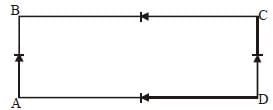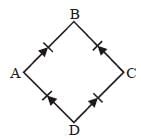31 Year NEET Previous Year Questions: Semiconductor Electronics - 4 - NEET MCQ
25 Questions MCQ Test - 31 Year NEET Previous Year Questions: Semiconductor Electronics - 4
p-n junction is said to be forward biased, when [1988]
At absolute zero, Si acts as [1988]
When n-type semiconductor is heated [1989]
Radiowaves of constant amplitude can begenerated with [1989]
In a common base amplifier the phase differencebetween the input signal voltage and the outputvoltage is [1990]
When a triode is used as an amplifier the phasedifference between the input signal voltage andthe output is [1990]
The depletion layer in the p-n junction region iscaused by [1991]
The following truth table corresponds to the logic gate [1991]

To use a transistor as an amplifier [1991]
Which one of the following is the weakest kindof bonding in solids [1992]
For amplification by a triode, the signal to beamplified is given to [1992]
For an electronic valve, the plate current I andplate voltage V in the space charge limited regionare related as [1992]
A piece of copper and other of germanium arecooled from the room temperature to 80 K, then [1993]
Diamond is very hard because [1993]
The part of the transistor which is heavily dopedto produce large number of majority carriers is [1993]
An oscillator is nothing but an amplifer with [1994]
When a p-n junction diode is reverse biased theflow of current across the junction is mainly dueto [1994]
In Fig., the input is across the terminals A and C and the output is across B and D. Then the output is

Which of the following gates corresponds tothe truth table given below? [1994]

In the diagram, the input is across the terminals A and C and the output is across B and D. Then the output is [1994, 02]

Which of the following, when added as animpurity, into the silicon, produces n-type semiconductor? [1995]
The current gain for a transistor working ascommon-base amplifier is 0.96. If the emittercurrent is 7.2 mA, then the base current is [1996]
When an n–p–n transistor is used as an amplifierthen [1996]
When arsenic is added as an impurity to silicon,the resulting material is [1996]
To obtain a p-type germanium semiconductor,it must be doped with [1997]





 hence it is NAND gate.
hence it is NAND gate.


















